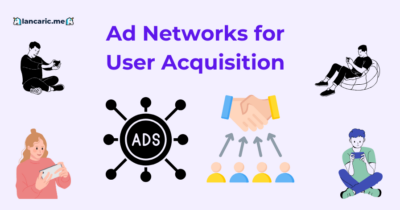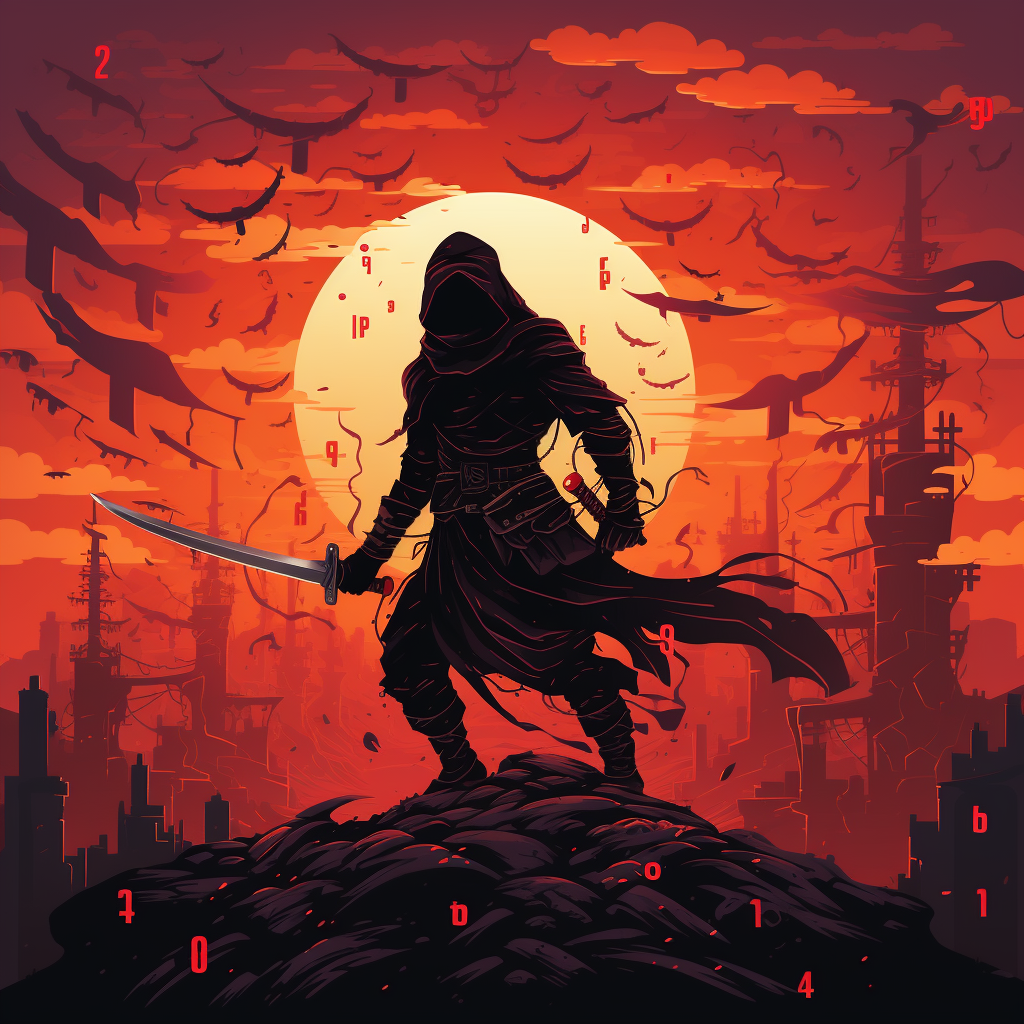
11 Tips for Killer User Acquisition Operations (Q3 version)
Helping you stay 2.5 steps ahead of the games industry. Don't be too serious, except about UA.
Subscribe to my Brutally Honest newsletter!
11 tips for killer User Acquisition operations can transform the way mobile game developers attract and retain players. Focusing on User Acquisition (UA), these tips provide practical strategies that are both scalable and results-oriented, helping studios streamline their campaign management processes. By leveraging data-driven insights and adopting efficient tools, developers can optimize ad creatives to capture the attention of their target audience effectively. These killer tips are designed to address common challenges in UA operations, such as improving conversion rates, maximizing ROI, and enhancing user engagement. With an emphasis on no-fluff, actionable advice, this guide equips mobile game marketers with techniques that deliver measurable success, ensuring every step in the User Acquisition journey is impactful and aligned with growth goals.
Following are the 11 tips for killer User Acquisition ops (Q3 version):
How Can AI Help You Create Winning Ad Creatives Faster?
How to Match Creative Types with Game Genres and UA Channels for Better Performance?
How to Revive Facebook UA Campaigns for Better Performance?
Why Should You Avoid Exposing Your Unfinished Game to Your Core Audience?
How to Choose the Best Countries for a Mobile Game Soft Launch?
What Are the Key Stages and KPIs to Focus on During a Soft Launch for Mobile Games?
When and How to Expand UA Channels During the Retention and Monetization Phases?
When Should You Pull the Plug on a Soft Launch Game?
How to Optimize UA Performance Through GEO Expansion and Tier-Based Strategies?
Does Localizing Your Game Creatives and Content Actually Improve Performance?
Why Is UA Diversification Crucial for Mobile Game Campaign Success?
How Can AI Help You Create Winning Ad Creatives Faster?
AI can help you in following way:
Producing a creative winner is not an easy job. There is this tactic when you create multiple different creative concepts – static images. You test them against each other. You take the winner and make a video out of that creative concept.
With the rise of AI, this can be even more effective. For two reasons:
- You can build different static concepts super fast and move to video
- You can be inspired by what others made and iterate until you find a winner
Examples:



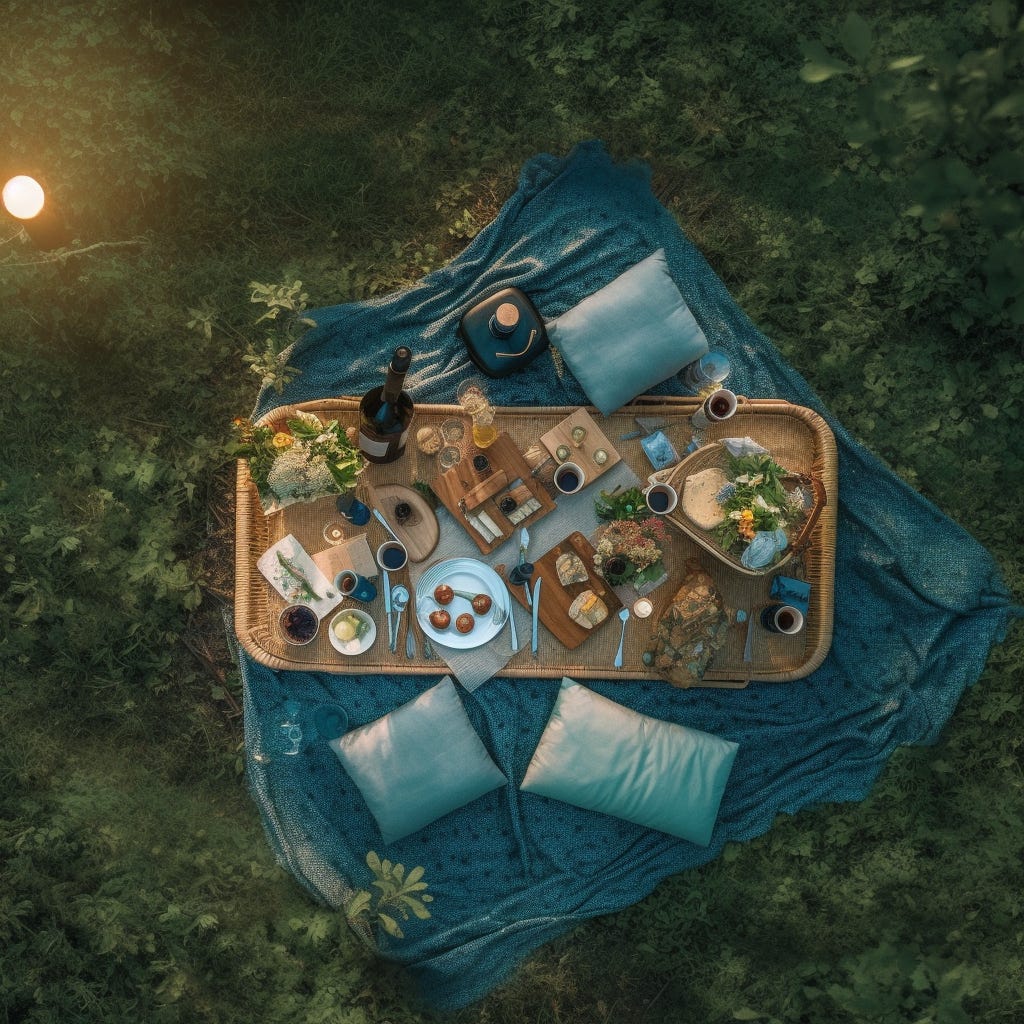


So many different views, angles, places, backgrounds, and ideas that you can use to find a winner quickly.
Thanks to this method, we were able to generate 36% more creative winners. (AHA! 36% is totally made up! No bullshit, I said it)
Does it work for every game? Nope!
Should you try it? Absolutely yes!
Check what others are creating in the mid-journey gallery or other AI tools and get inspired now!
How to Match Creative Types with Game Genres and UA Channels for Better Performance?
To Match Creative Types with Game Genres and User Acquisition Channels for Better Performance you need to follow the following steps:
Everything is about your creatives, we already know that. You also need to think about the right combination of creative types, game genres, and UA channels. Okay okay okay, let’s bring up a few examples:
Racing games
Strong performance on Facebook and TikTok thanks to gameplay-oriented video creatives. Gameplay combined with leaderboards, tricks, and showcasing skills!
Cooking games
Strong performance on Facebook thanks to static images! Showing various views of the kitchen, food, and customers. Just read the tip above again! Google video creatives are oriented mainly on serving annoyed and pissed customers!
Idle games
Playables on SDK networks like Applovin, Unity, or Ironsource. Do you remember what we discussed in the recent reviews?
or
Think about the right type for your game and UA channel. That will help to get those IPMs up and unlock higher budgets!
How to Revive Facebook UA Campaigns for Better Performance?
To Revive Facebook UA Campaigns for Better Performance you need to do following things:
I started working recently with a few games, and guess what?! Facebook was paused because it was not performing at all.
When I look around, I am not even surprised. Facebook should wake up and start doing something because advertisers will just leave the platform and spend elsewhere.
I usually bitch about Facebook a lot, but I still keep this UA channel in the mix. It’s a great channel when it works. So I obviously restarted Facebook with very questionable results at the start. After 2 weeks, it started to get better and better. What have I done?
Completely changed the GEO mix – according to the LTV (IAP vs IAA) and tested it against Worldwide!
Tested multiple campaign optimizations – AEO Engagement events, AEO IAA events, AEO Purchase, and eventually VO as well
Oh. Creatives! As mentioned in the previous brutally honest newsletter, IMHO Facebook requires a different approach. Facebook favors polarising content (that’s why a lot of fake ads get so much attention & engagement) – so I changed the creative strategy!
Results improved heavily, and they are moving in the right direction. It requires a few more steps to get where we want to be, but we will get there!
And you will get there as well!
Why Should You Avoid Exposing Your Unfinished Game to Your Core Audience?
Avoid Exposing Your Unfinished Game to Your Core Audience for following reasons:
I know you believe your game is ready after a long time in development, but no. It’s not.
You should always open up Tier 2 or other Tier 1 geos when you have all your retention features (and some early monetization) in the game and moving to monetization.
But Tier 2 retention sucks. Maybe, so what? The retention curve should be very similar in all GEOs. Yes, e.g. Poland will have different retention metrics/KPIs than the Netherlands, but the shape of the curve will look the same. And the CPIs are going to be lower in PL too.
But Supercell goes to the US right away! Yeah, so what? Are you Supercell? They softlaunched their games previously on iOS too which was a terrible idea, a different approach than 99% of mobile companies. Now they do close betas like Blizzard with Diablo IV. Should everybody do this? Hell no. Look at the FloodRush. Already killed!
Why no?
- You don’t have the context of why other companies do things they do (if you don’t have context, you will fail miserably)
- You are not a big, well-known company that can do weird shit and get away with it (think about your cash flow and how many shots on the goal you have left)
- Get inspired, but don’t copy – find your own way that works for you!
First UA campaigns have always the best KPIs since they attract the initial batch of high-quality users which you will not be able to tap into again after the global launch.
How to Choose the Best Countries for a Mobile Game Soft Launch?
To Choose the Best Countries for a Mobile Game Soft Launch follow the following steps:
In order to discover what country could be the best fit for your mobile game, what are the criteria to look for? English proficiency, device penetration & payment behavior!
There is a wide range of different countries that seem quite suitable for a soft launch. It is always important to think about your game target audience when picking the most suitable GEOs.
My favorite country for mid-core games (male-oriented) is Poland, because it has really big Android penetration, high English proficiency, and a big male audience. But if I soft-launched a female-oriented game, I would most probably skip Poland as a GEO and go to France, Spain or Italy. This is how we did it for Darts Club back in the days:
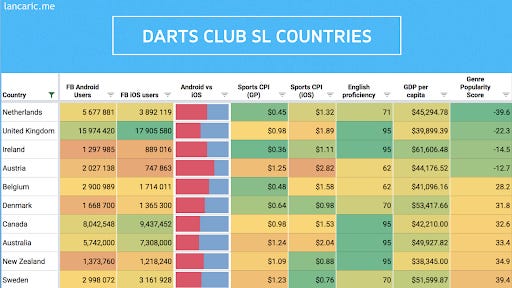
Looking at multiple things like Facebook audience, potential CPI, English proficiency and we did some calculations on the genre popularity. This was all manual work, but I’ve done it for you in some countries here:
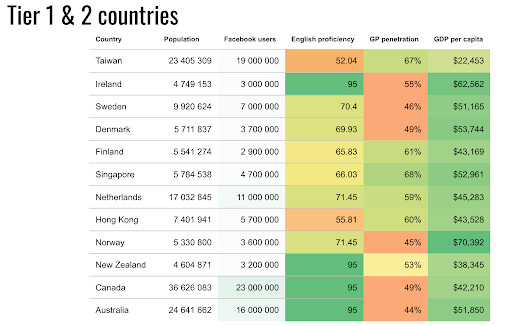
The most frequent question in soft launching: Is my CPI good? How does it compare to other games? While there was a Chartboost CPI benchmarks website, that is really obsolete and far from the truth. Here are some examples I can share to get an idea about how CPIs vary between GEOs and different optimizations:
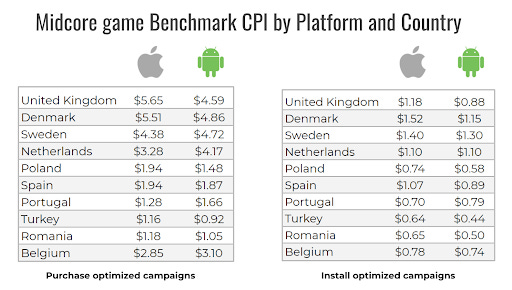
The last tip in terms of countries, look at the competitor games and their top 20+ countries in terms of downloads & revenue.

What Are the Key Stages and KPIs to Focus on During a Soft Launch for Mobile Games?
Key Stages and KPIs to Focus on During a Soft Launch for Mobile Games are given below:
I like to divide soft launch into three stages – Technical, Retention, and Monetisation. Each stage serves a different purpose and we measure different KPIs.
While in the Technical stage, we are mostly focusing on data health, crash rate, and tracking in general, in the Retention stage we measure D1, D3, and D7 Retention (DUH!), FTUE, tutorial completion rate, and much more..
Game developers are obsessed with achieving the highest D1 retention numbers they can, but D1 is not the holy grail. I’ve seen games with D1 retention of around 25% still being able to generate 2 million EUR a month. The magic was behind really good D60 retention, which was 6-8%. Therefore, it is absolutely crucial to focus on the ratio between D1, D3 and D7.

But enough about retention, let’s focus on the monetization stage where the fun starts. Measuring ARPU, conversion to payment, and Dx ROAS requires running purchase (ROAS) oriented campaigns – AEO/VO on Facebook or tCPA/tROAS on Google Ads.
Let’s not forget about Ad monetization. In this stage, you should already have cracked the rewarded video ad placement. Now you are playing around with setting up waterfalls and combining floors with bidders.
If you’re not familiar with how to manage an ad waterfall or the mediation setup at this stage I would recommend relying solely on Unity ads. Once you’ve set up ads, the North Star KPI you should track at this stage is Impression per DAU.
Generally, an IMP/DAU above 4.0 means the Rewarded Video (RV) placements you’ve placed in the game will impact your UA efforts in a meaningful way.
If you’re coming in below this number you either have to change the RV placements, and RV rewards or accept that the Ad revenue will not make up a significant portion of your revenue.
If you’re only using one ad partner at this stage, it is a good general rule of thumb that once you add a mediation platform you’ll increase your ad revenue by 100%.
Then with a proper mediation setup, you’ll further increase the ad revenue by another 25%.
When and How to Expand UA Channels During the Retention and Monetization Phases?
To Expand UA Channels During the Retention and Monetization Phases you can follow the the process mentioned below:
In the retention phase, you should be thinking about running at least two channels to benchmark them against each other. Which channels? Depends on your genre, but for example if you have a merge game. I would go with Facebook and Unity.
How about iOS? When to add it? Honestly, I do it after a few months of testing and running UA on Android. After you get the initial data on Android, you improve the game, then you add iOS.
Ideally just before starting the monetization phase. So you can configure your conversion schema and start the first tests.
Don’t forget – Soft-launching your mobile game on only one UA channel is not enough!
Go with 2-3 into the monetization phase to get the read on Purchase campaigns.
When Should You Pull the Plug on a Soft Launch Game?
When to pull the plug on a game in soft launch is like deciding whether to break up with someone you’ve been dating.
Last soft launch tip in this edition!
The dreaded decision of when to pull the plug on a game in soft launch. It’s like deciding whether to break up with someone you’ve been dating.
Here’s the deal: If your last 2-3 builds didn’t improve the KPIs and your game is consistently underperforming, not showing any signs of improvement, and your user feedback is as scarce as unicorn sightings, it may be time to say goodbye.
But before you do, make sure you’ve exhausted all your options, tested different UA channels, and mercilessly optimized creatives. And remember, sometimes it’s better to cut your losses and move on to a new adventure. Especially in this tough market. Previously, you had 6-9 months to figure things out. Now, it’s more like 3-6 months.
But hey, don’t be too hard on yourself. We can’t all create mobile gaming masterpieces. It’s like trying to make a gourmet meal out of instant ramen.
So, my advice? Trust your gut, and don’t be afraid to hit that “uninstall” button. Your company (cash flow) will thank you.
How to Optimize UA Performance Through GEO Expansion and Tier-Based Strategies?
Optimizing UA Performance Through GEO Expansion and Tier-Based Strategies are given below:
GEO expansion, performance & goals! Super important topic. I discussed the campaign tiers where you have Tier 1, Tier 2 (sometimes Tier 3), and Rest of the World to cover everybody.
What this usually means is lower CPI on Tier 3, but also usually lower LTV. When running UA in Tier1 countries like the US, UK, FR, DE, CA, AU, etc..… you have certain goals (D0, D1, D3, and/or D7). You have to keep in mind that expanding from Tier 1 will definitely help you scale, but think about setting up new (most likely higher) goals because the LTV and retention curves are not the same as with Tier 1 countries.
Look at the overall Tier performance each month to promote or demote countries. E.g.:
CA, AU underperforming in the last 30 days → move from Tier 1 to Tier 2
CZ, SK, PL, BR performing great in the last 30 days → move from Tier 2 to Tier 1
AR, CO, MY, PH performing great in the last 30 days → move from ROW to Tier 3
Does Localizing Your Game Creatives and Content Actually Improve Performance?
Yes, Localizing Your Game Creatives and Content Actually Improve Performance. It can help you improve numbers by 10-20% on the CPI side and conversion rate. But don’t expect more. As we understood from our KR visit, it makes a lot of sense in Asia (No shit, Sherlock!) Yeah, I know, what a revelation. So how should you go about the localization of your creatives and game?
Look at your top 10 countries in terms of revenue. Look at your resources and money. Then add the 10% “uplift” on the revenue side and try to calculate the costs vs potential gain. Calculated profit? Good.
Do you have a very strong community in France, and your game is text-heavy? In this case, you could maybe add a 20% “uplift” to the equation.
It’s actually as simple as that. Don’t put too much effort into localizing the game. If it’s not hitting the goals, localization won’t help you too much.
Why Is UA Diversification Crucial for Mobile Game Campaign Success?
UA Diversification is Crucial for Mobile Game Campaign Success for the following reasons:
UA diversification is super important. How many times have you heard this? Most probably at least 1438764387463x.
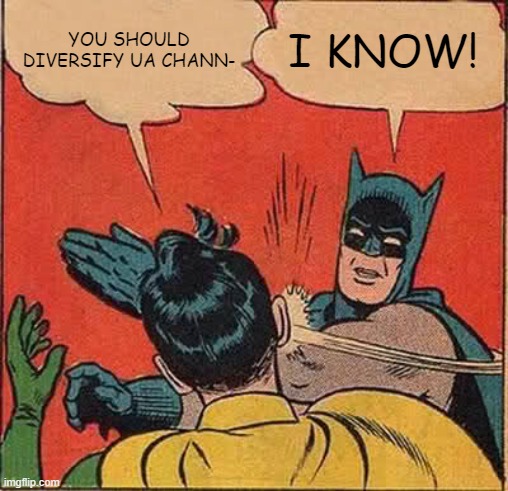
Diversifying the UA also means moving away from channels that don’t work. I still see teams dwelling on Facebook (or Google or whatever else) for too long before they pause it completely. And it’s okay to pause one channel and move the budget elsewhere where it makes sense.
I also thought I didn’t need to add any new UA channel until I spent $1mil/month on Facebook. That was me a few years ago. Now I know its important to start exploring new channels ASAP. What does your UA mix look like?
- Facebook & Google
- Facebook, Google & TikTok
- Google, Applovin & Unity
- Applovin, Unity, Tiktok & Google
- Facebook, Google, Applovin & Moloco
- Applovin, Unity, Tiktok, Ironsource, Google, Facebook, Mistplay, MyAppFree, Adjoe, Mintegral
Here are a few examples from my UA portfolio. Pretty wild mix, but you have to experiment and add new channels frequently.
Cooperation between the external partner and the internal team is always essential. You always want to work with people who love their jobs and love working in their team. And when this happens, everything is so much easier, and if there is a mistake, everybody knows about it.
Don’t forget to check out also latest creative trends:
Anything that I missed?
Oh wow! You made it here! You must be very engaged. I like that type of players… Ehm, people!
Please share this article with your industry friends. It would mean the world to me.
Also, subscribe to my newsletter. It’s so honest it might actually annoy you. If you are easily annoyed, please don’t subscribe. Subscribe now to podcast
Subscribe to Brutally Honest Newsletter
Helping you stay 2.5 steps ahead of the games industry. Don't be too serious, except about UA.
Subscribe to my Brutally Honest newsletter!





